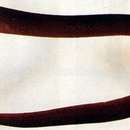Diagnostic Description
provided by Fishbase
Anguilliform body; no scales; no pectoral and pelvic fins; dorsal, caudal and anal fins confluent and reduced to a skin fold; gill openings merged into single slit underneath the head (Ref. 27732). Rice paddy eels are red to brown with a sprinkling of dark flecks across their backs; large mouths and small eyes (Ref. 44091).
- Recorder
- Crispina B. Binohlan
Diseases and Parasites
provided by Fishbase
Dentiphilometra Infestation. Parasitic infestations (protozoa, worms, etc.)
Diseases and Parasites
provided by Fishbase
Proleptinae Disease (general sp. larvae). Parasitic infestations (protozoa, worms, etc.)
Diseases and Parasites
provided by Fishbase
Eustrongylides Disease (larvae). Parasitic infestations (protozoa, worms, etc.)
Diseases and Parasites
provided by Fishbase
Trypanosoma Infection. Parasitic infestations (protozoa, worms, etc.)
Diseases and Parasites
provided by Fishbase
Pallisentis Infestation. Parasitic infestations (protozoa, worms, etc.)
Life Cycle
provided by Fishbase
Male builds a large free-floating bubblenest among the submerged vegetation close to the shoreline; eggs are spat into the nest after being laid; male guards the nest and continues to guard the young after hatching till they are on their own (Ref. 44091). Spawning occurs in shallow water (Ref. 2060). Sex reversal is completed in 8-30 weeks (Ref. 34260).
Migration
provided by Fishbase
Potamodromous. Migrating within streams, migratory in rivers, e.g. Saliminus, Moxostoma, Labeo. Migrations should be cyclical and predictable and cover more than 100 km.
Trophic Strategy
provided by Fishbase
Found in several types of wetlands from hillstreams to lowland swamps and rice paddy field (Ref. 94495).
Biology
provided by Fishbase
Found in hill streams to lowland wetlands (Ref. 57235) often occurring in ephemeral waters (Ref. 44894). Adults are found in medium to large rivers, flooded fields and stagnant waters including sluggish flowing canals (Ref. 12975, 12693), in streamlets and estuaries (Ref. 41236). Benthic (Ref. 58302), burrowing in moist earth in dry season surviving for long periods without water (Ref 2686). Occasionally dug out in old taro fields, in Hawaii, long after the field has been drained; more frequently observed in stream clearing operations using heavy equipment to remove large amounts of silt and vegetation where the eels are hidden (Ref. 44091). Nocturnal predators devouring fishes, worms, crustaceans, and other small aquatic animals (Ref. 44091); also feed on detritus. Are protandrous hermaphrodites. The male guards and builds nest or burrow (Ref. 205). Marketed fresh and can be kept alive for long periods of time as long as the skin is kept moist (Ref. 12693). Good flesh (Ref. 2686). Important fisheries throughout Southeast Asia (Ref. 57235).
Importance
provided by Fishbase
fisheries: commercial; aquaculture: commercial; aquarium: commercial

